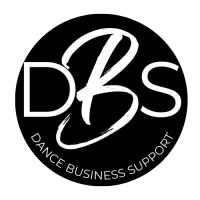Running a dance studio involves more than just perfecting choreography and creating a welcoming atmosphere for dancers. Behind the scenes, effective budget management plays a crucial role in ensuring the studio’s sustainability and growth. Whether you are a new dance studio owner or a seasoned manager, understanding and implementing sound financial practices is essential for the success of your business.
Tips For Efficient Budget Management
Establish Clear Financial Goals
Before diving into budgeting, it’s crucial to establish clear financial goals for your dance studio. Are you looking to expand your class offerings, renovate the studio space, or invest in marketing? Identifying your objectives will help you allocate resources appropriately and prioritize spending.
Create a Detailed Budget
A comprehensive budget is the foundation of effective financial management. Break down your expenses into categories such as rent, utilities, instructor salaries, marketing, costumes, and miscellaneous costs. Ensure that you consider both fixed and variable expenses, accounting for potential fluctuations in income.
Monitor Cash Flow
Cash flow is the lifeblood of any business, and dance studios are no exception. Regularly monitor your cash flow to identify patterns and anticipate any potential issues. This involves tracking income and expenses in real-time, ensuring that you have enough liquidity to cover operational costs.
Embrace Technology
Modernize your budget management by leveraging technology. Use accounting software to streamline financial processes, track expenses, and generate detailed reports. Automation can significantly reduce the risk of human error and save time, allowing you to focus on the creative aspects of running your dance studio.
Negotiate Vendor Contracts
Establishing strong relationships with vendors can lead to cost savings. Negotiate contracts with suppliers, especially for recurring expenses such as dancewear, music licenses, and studio supplies. Bulk purchasing and long-term agreements may result in discounts, contributing to overall budget efficiency.
Diversify Revenue Streams
Relying solely on class fees may limit your revenue potential. Explore additional income streams, such as workshops, private lessons, or merchandise sales. Diversification can provide financial stability and mitigate the impact of seasonal fluctuations in class attendance.
Prioritize Marketing Investments
Effective marketing is crucial for attracting new students and retaining existing ones. Allocate a portion of your budget to targeted marketing strategies, such as social media advertising, community events, and partnerships with local businesses. A well-thought-out marketing plan can yield a high return on investment.
Plan for Contingencies
Unexpected expenses are inevitable in any business. Create a contingency fund within your budget to cover unforeseen costs, such as equipment repairs, emergency maintenance, or unexpected dips in revenue. Having a financial safety net will help your dance studio weather challenges and maintain stability.
Regularly Review and Adjust
Budgeting is an ongoing process that requires regular review and adjustment. Analyze financial reports, assess the effectiveness of your budget allocations, and make necessary changes to adapt to evolving circumstances. Flexibility and adaptability are key to long-term financial success.
Conclusion
A well-managed budget is the backbone of a successful dance studio. By establishing clear financial goals, creating a detailed budget, and embracing modern technology, you can ensure that your studio’s finances are in harmony. Prioritize cash flow, negotiate vendor contracts, diversify revenue streams, and plan for contingencies to build a resilient financial foundation for your dance studio’s continued success. Regular review and adjustment will allow you to navigate the dynamic landscape of the dance industry and keep your studio in step with financial success.







